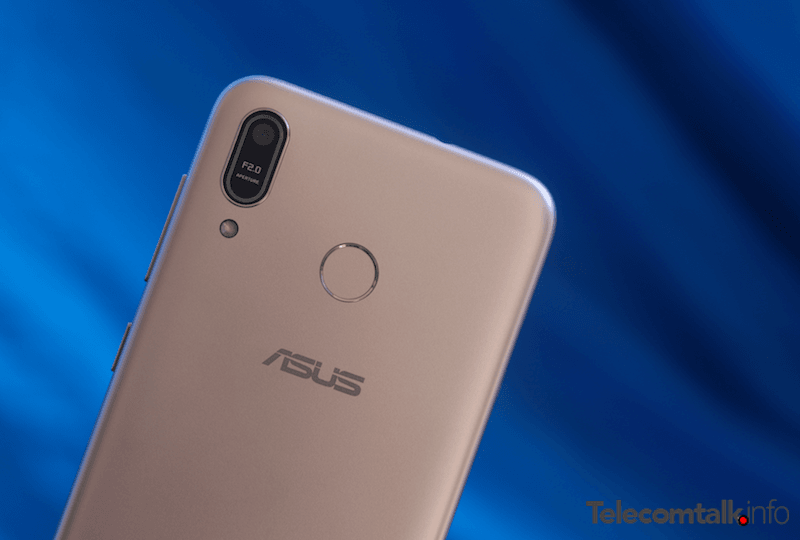Taiwanese brand Asus had a successful 2018 in India with the company's all four smartphones- Asus Zenfone Max Pro M1, Zenfone 5Z, Zenfone Max M1 and Zenfone Lite L1 making a mark in the industry. Asus recently announced that it sold over one million units of Zenfone Max Pro M1 in six months of launch. While the Max Pro M1 was a mid-range device, Asus' foray into the entry-level and budget segments happened with the Zenfone Max M1 and Zenfone Lite L1. The Asus Zenfone Max M1, as the name itself suggests is a watered down version of the Max Pro M1. Priced at Rs 8,999, the new launch from Asus boasts a beefy 4000mAh battery, Qualcomm Snapdragon 430 octa-core chipset and boots ZenUI out of the box. How does this new launch from Asus competes with its first smartphone of 2018? Read on to know more.

Asus Zenfone Max Pro M1 vs Asus Zenfone Max M1: Design, Display and Hardware
The Asus Zenfone Max M1 sports a 5.45-inch HD+ display which renders a resolution of 720x1440 pixels on an IPS panel with an 18:9 aspect ratio, it features a peak brightness of 400 nits and a screen to body ratio of 82%. On the other hand, the ZenFone Max Pro M1 sports a 5.99-inch display with a similar 18:9 aspect ratio. On the software front, the Asus ZenFone Max M1 boots ZenUI 5.0 with the Android Oreo on the backend, whereas the Asus Zenfone Max Pro M1 comes with a stock Android experience of Android 8.1 Oreo.
When it comes to hardware, the ZenFone Max M1 packs the octa-core Qualcomm Snapdragon 430 SoC, paired with 3GB of RAM and 32GB internal storage. The phone provides the option of expanding storage via a microSD card up to 256GB. On the other hand, the ZenFone Max Pro M1 packs the octa-core Qualcomm Snapdragon 636 SoC under the hood with 3GB/ 4GB/ 6GB of RAM and 32GB/ 64GB of internal storage depending on the variant.
On the camera and imaging front, the ZenFone Max M1 flaunts a 13MP rear camera with a f/2.0 aperture, with 1.12-micron pixel size, PDAF along with a LED flash. The ZenFone Max Pro M1, on the other hand, sports a dual rear camera setup comprising of a 13MP primary sensor with f/2.2 aperture and a 5MP secondary sensor for bokeh mode shots. The selfie snapper on the ZenFone Max M1 is an 8MP shooter with f/2.2 aperture, 1.12-micron pixel size, and a LED flash, while the ZenFone Max Pro M1 gets an 8MP front snapper with a f/2.0 aperture, 85.5-degree wide-angle lens, 5P lens and a LED flash with soft light.
The ZenFone Max M1 packs a 4000mAh battery which also lends support for 10W (5V/2A) charging, whereas the ZenFone Max Pro M1 has a significantly better 5000mAh battery with the support for same 10W charging.
For connectivity, the ZenFone Max M1 includes 4G VoLTE, Wi-Fi 802.11 b/g/n, Bluetooth v4.0, GPS/ A-GPS, a Micro-USB port, GLONASS and a 3.5mm headphone jack. The ZenFone Max Pro M1 also gets 4G VoLTE, Wi-Fi 802.11 a/b/g/n with Wi-Fi Direct, Bluetooth v4.2 with aptX, GPS/A-GPS, a Micro-USB port, GLONASS and a 3.5mm headphone jack.
Asus Zenfone Max Pro M1 vs Asus Zenfone Max M1: Pricing
The newly launched Asus ZenFone Max M1 retailed for Rs 7,499 as an introductory offer until Diwali. Notably, the original price of the Asus ZenFone Max M1 price in India has been set at Rs 8,999 at which the phone is currently retailing. The Asus Zenfone Max M1 is available in the colour options of Black and Gold.
As part of the launch offers for ZenFone Max M1, there is a Rs 2,200 cashback along with 50GB additional data with a Jio SIM card. Flipkart will also be offering No-cost EMI options up to six months for the buyers of this phone.
The Asus ZenFone Max Pro M1, on the other hand, retails for a price tag of Rs 10,999 for the entry-level variant of 3GB RAM and 32GB storage. The other variant of 4GB RAM and 64GB storage bears a price tag of Rs 12,999, while the highest variant which comes with 6GB RAM and 64GB storage is available for Rs 14,999. The colour options for this phone include Blue, Deepsea Black, and Grey.















